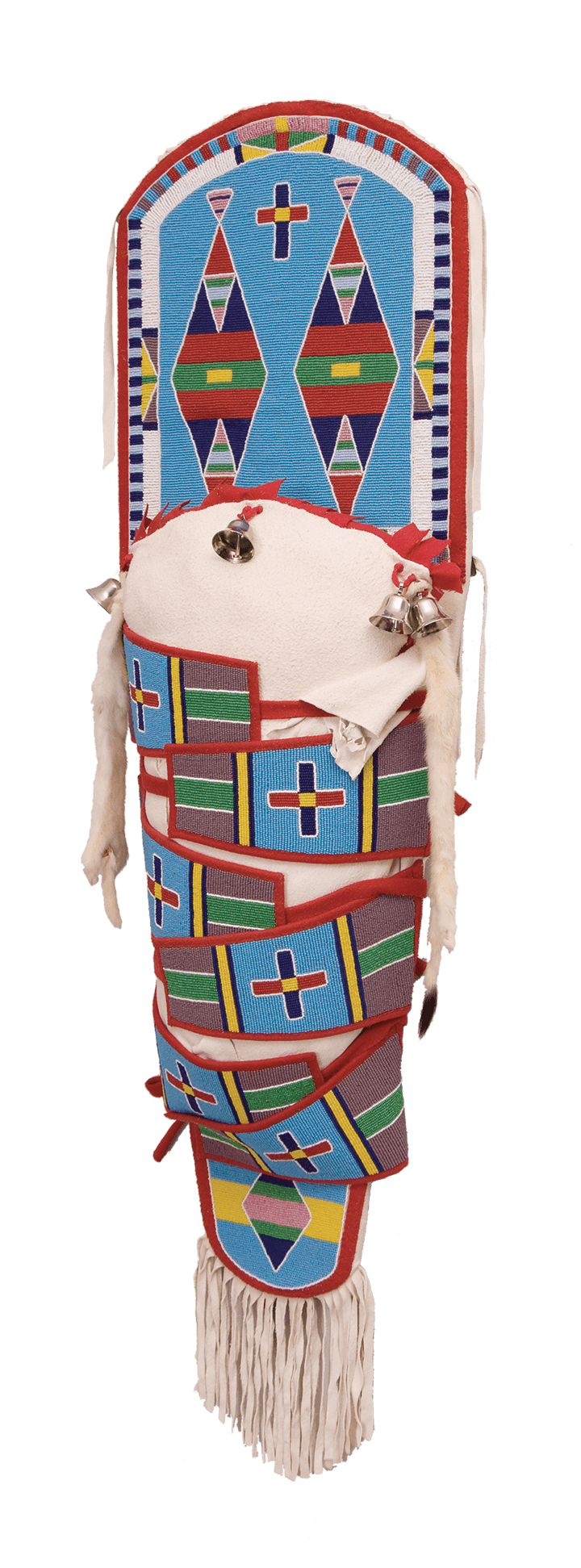About the exhibit
Native American Cradles
The cradle is one of the most striking symbols of native American childhood. When and where they were first used is not known. They probably arrived in North America with the Bering land bridge migrants. However, archeological evidence suggests a longer tradition of cradle usage. What we do know is that cradles were used in most of North America and parts of South America. Although their appearance differed from group to group, their overall form remained the same. Each cradle had a “bed”, some sort of covering, padding, and lashing. Other features, like handles or dangling trinkets, were widespread but not universal. Likewise, materials varied from region to region.
Cradle-making was often reserved for the most accomplished and skilled artisans. In fact, most cradles were made as gifts for special newborns. Families that didn’t have their own cradle often borrowed one from a friend or relative until the child outgrew it. As such, a single cradle was often used for generations.
Usage varied from group to group. Some women carried their children on their backs with the aid of a tumpline around the forehead or chest. Others carried their cradles by hand. Some hung their cradles from their horse’s saddle or on a nearby tree. Regardless of its location, the cradle kept the baby secure, immobile, warm, and out of the way. Many cradles could be used horizontally or vertically, which allowed mothers to put children to bed without waking them.
Of course, babies didn’t stay in a cradle all day. They were routinely removed for bathing and exercise. During this time, fresh padding made from moss, cattail down, and other materials were placed in the cradle to absorb waste.
Early cradles were usually utilitarian and plain. Some were simple, rolled-up hides with the hair left on the provide warmth and padding. After the introduction of glass beads by European colonists, cradles became more ornate. Decorated cradleboards, especially among Plains groups, were a symbol of prestige. The same care and attention to detail was latter given to the construction of smaller doll cradles, which were given to children as toys.
Cradle usage started to decline at the beginning of the twentieth century. During this time, museums and collectors began purchasing cradles that had been in families for generations. As a result, artists began making cradles, both large and small, for the commercial market, not domestic use. Today, cradles are still made by some but used only by a few. Most are made for art competitions, where winners can still gain prestige from their cradles.
Native American Cradles features over forty examples from most of North America. The exhibit closes June 9, 2019.
Lattice Cradle, ca. 1890. Kiowa (Plains). Promised Gift of Drs. Nira and Leonard Levine.
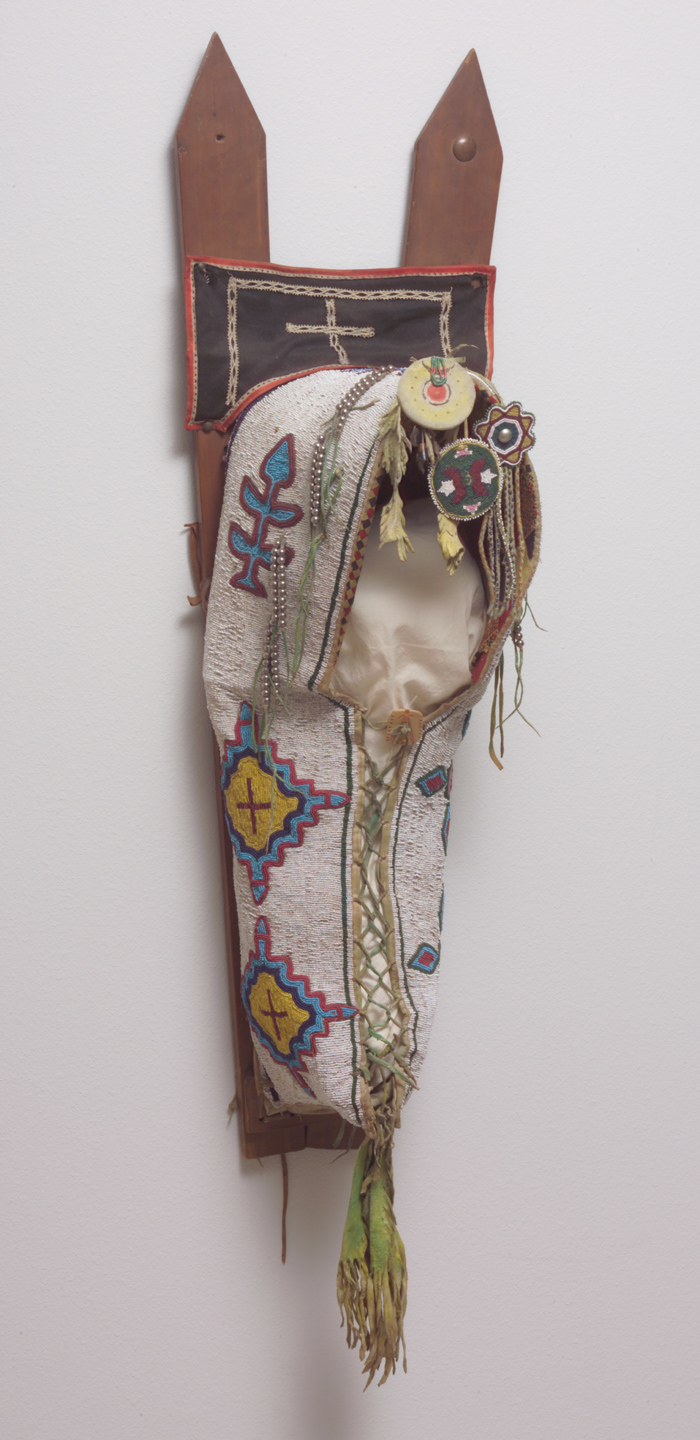
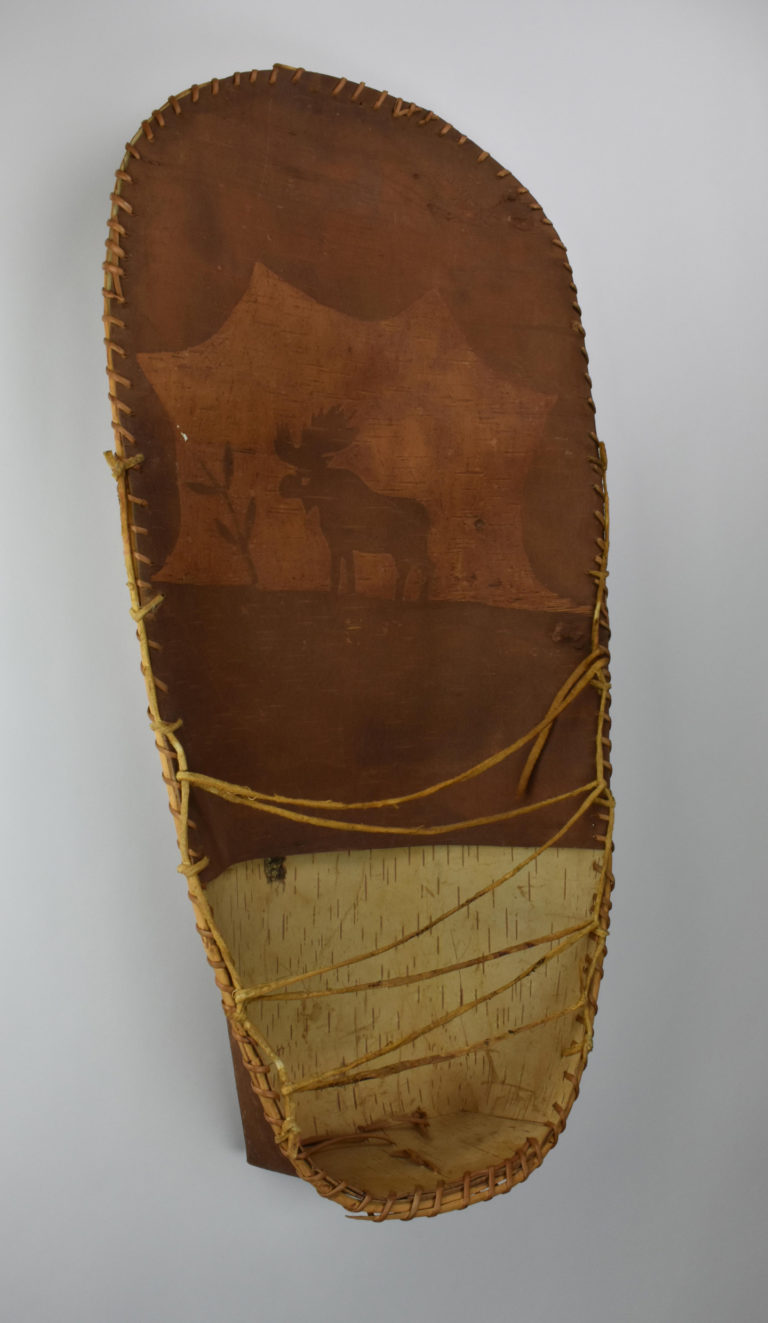
Cradle, ca. 1900. Algonquin, possibly Passamaquoddy (Northeast Coast). Gift of Drs. Nira and Leonard Levine.
Cradle, ca. 1897. Mesquakie (Iowa). Gift of Quintus H. Herron.
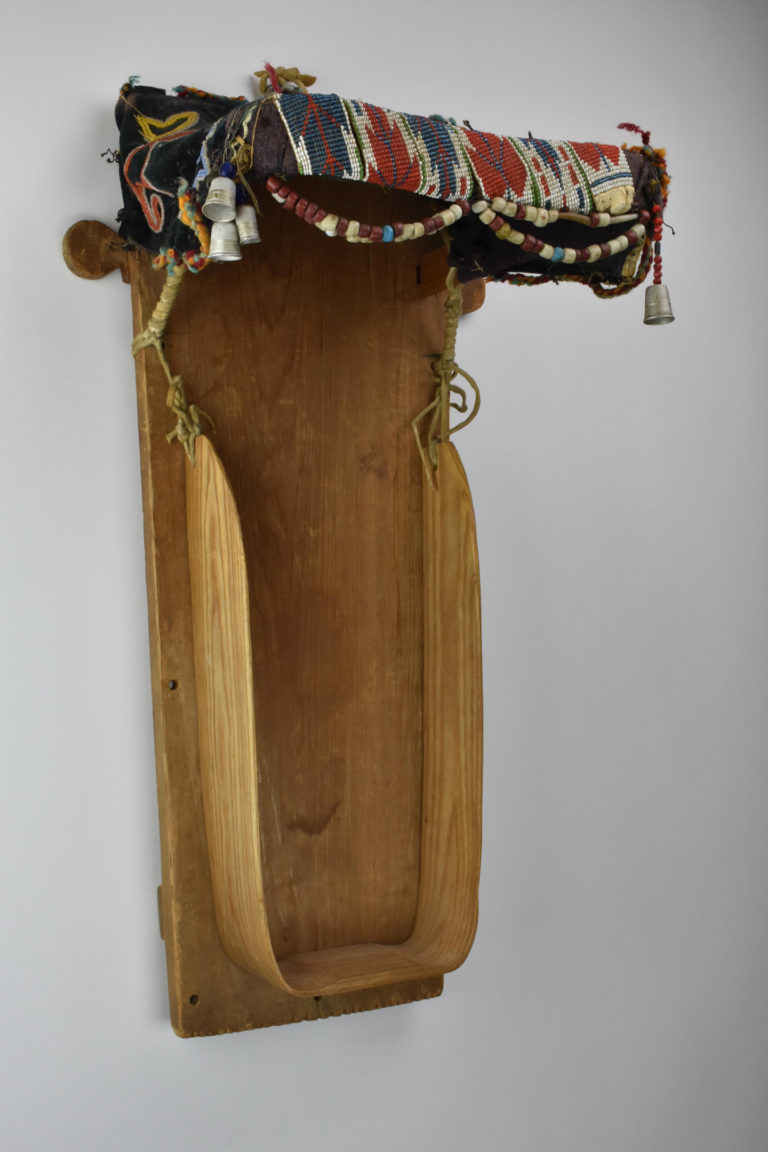
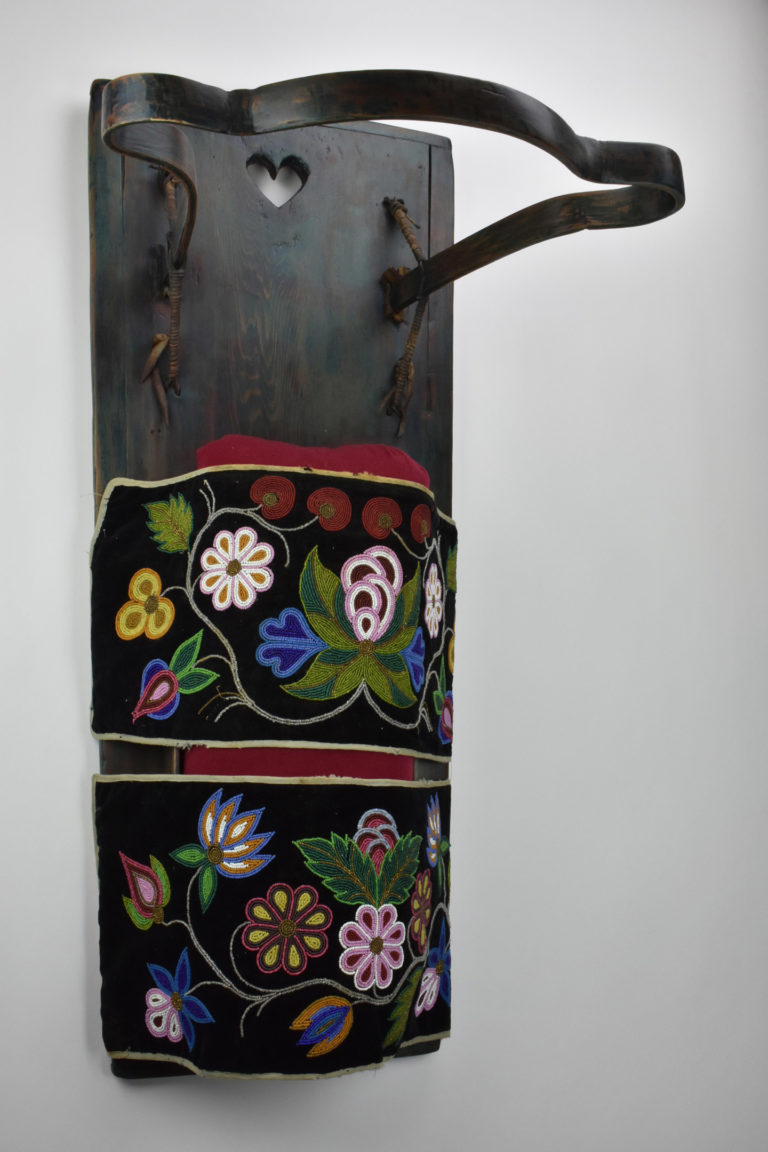
Board Cradle, ca. 1900. Ojibwe (Northeast). Gift of Drs. Nira and Leonard Levine.
Model Cradle, ca. 2000, by Vanessa Paukeigope Jennings (b.1952, Kiowa [Oklahoma]). Bequest of the Quintus H. Herron Trust.
![Model Cradle, ca. 2000, by Vanessa Paukeigope Jennings (b.1952, Kiowa [Oklahoma]).](https://museumoftheredriver.org/wp-content/uploads/2019/02/Model-Cradle-by-Vanessa-Jennings-768x1381.jpg)
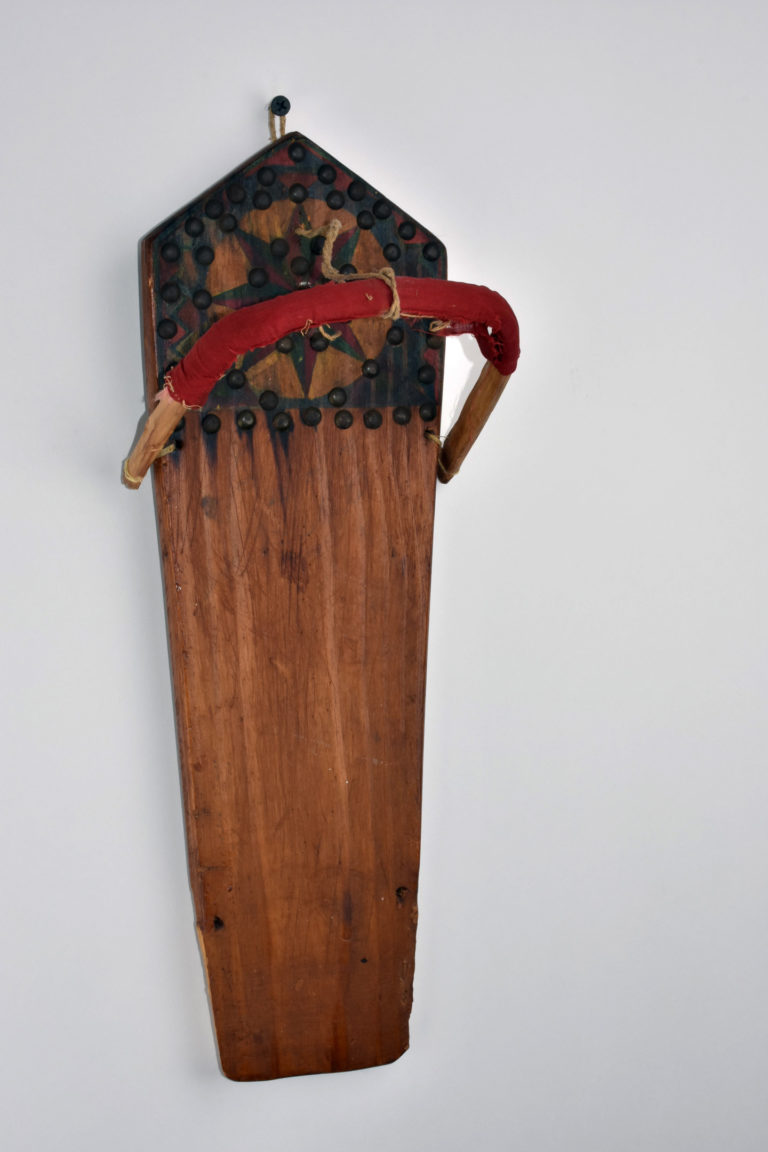
Model Cradle, ca. 1870. Omaha (Plains). Gift of Drs. Nira and Leonard Levine.
Model Cradle, ca. 1870 – 1890. Pawnee (Plains). Gift of Drs. Nira and Leonard Levine.
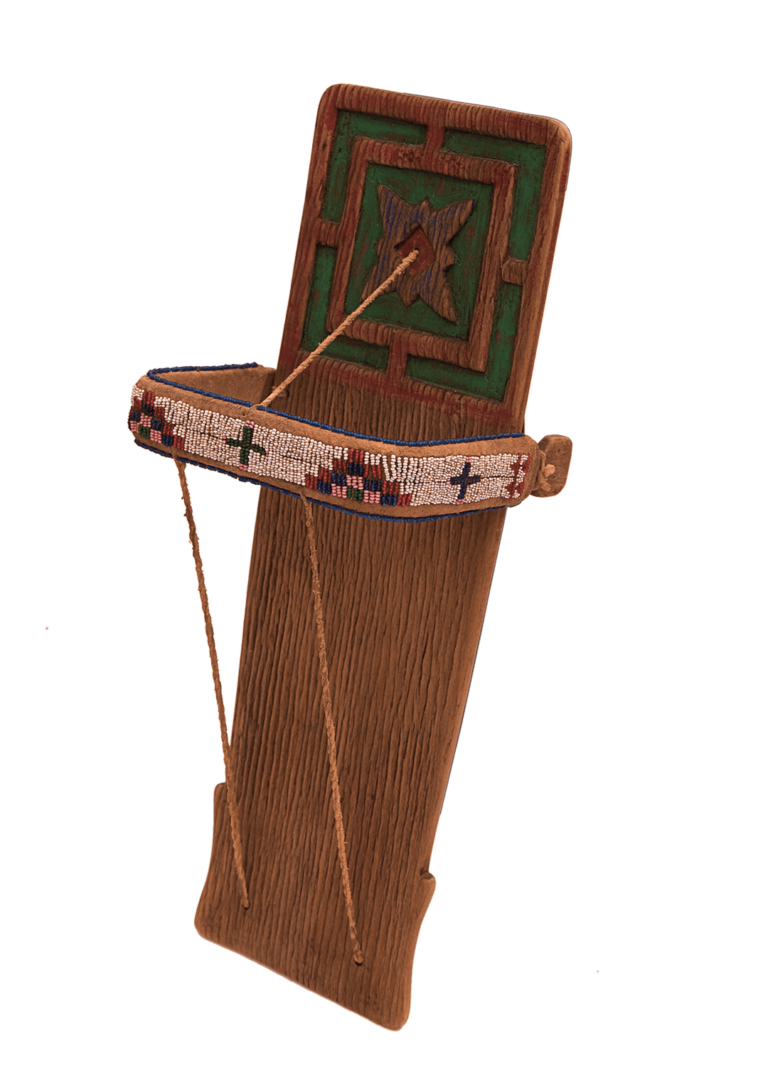
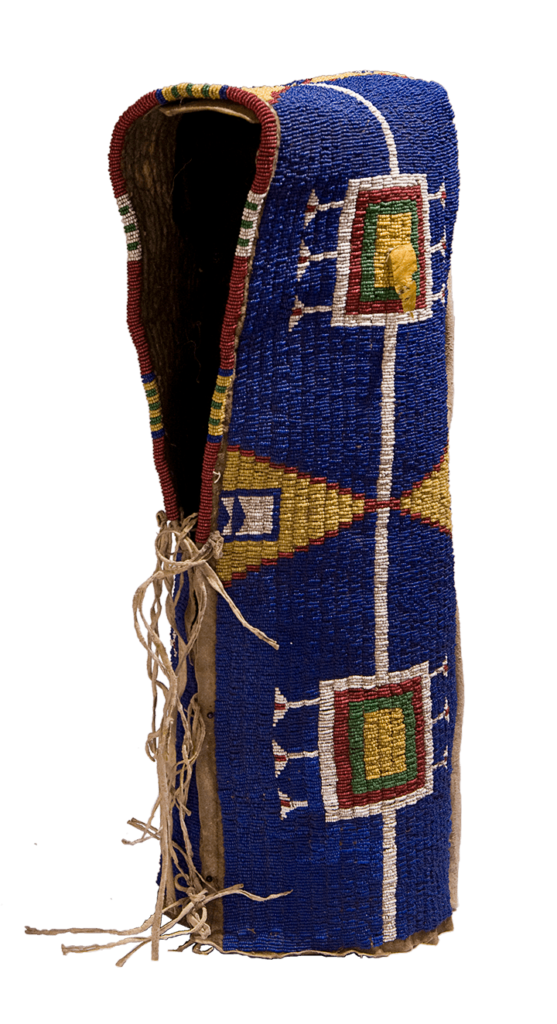
Cradle, ca. 1890. Lakota (Plains). Gift of Drs. Nira and Leonard Levine.
Cradle, ca. 1990, by Donna Ringle. Crow (Plains). Gift of Drs. Nira and Leonard Levine.
